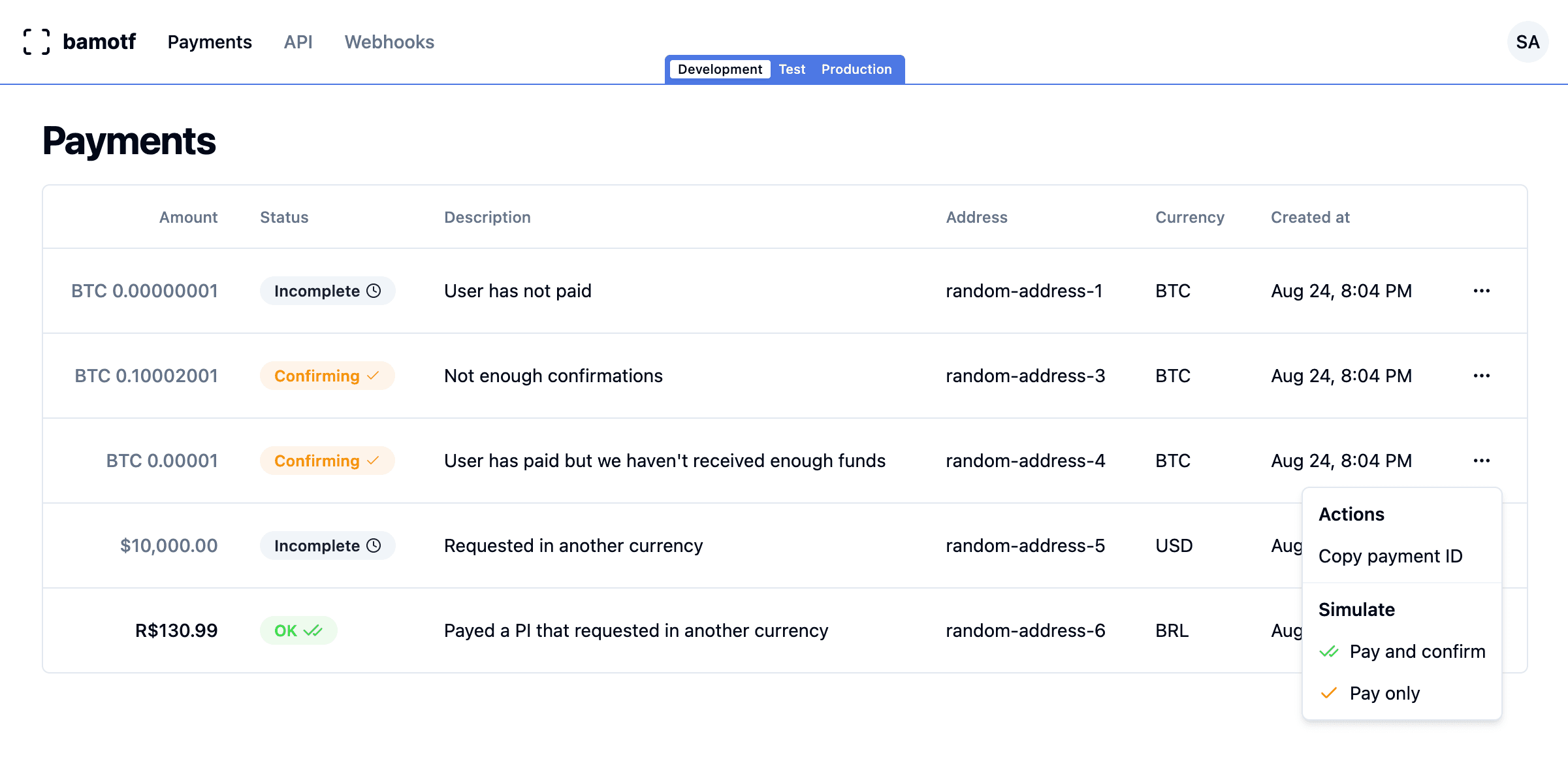Testing integration during development
Testing your integration with the Bitcoin Network can be tricky. You need to
wait for confirmations and have some coins to test with. But don't worry!
bamotf has a development mode that makes this process simpler. This guide
will show you how to enable and how to use it.
Running the development mode
To use the development mode, you need to do a few things:
Enable dev mode
Run the bamotf server with the DEV_MODE_ENABLED environment variable turned
on. You can do this by adding DEV_MODE_ENABLED=true to your docker-compose
file.
Set up credentials and webhook
Set the DEV_API_KEY, DEV_WEBHOOK_URL, and DEV_WEBHOOK_SECRET environment
variables. These are needed to access the bamotf server locally and to set up
the webhook that gets called when the dev payment is done.
Here is an example of a docker-compose file that enables the development mode:
version: '3.8'
services:
bamotf:
...
environment:
...
- DEV_MODE_ENABLED=true
- DEV_API_KEY=no-key
- DEV_WEBHOOK_URL=http://localhost:3000/my-webhook-page # replace with your webhook url
- DEV_WEBHOOK_SECRET=no-secret
postgres:
...Testing your integration
Once you've set up your payment intent, it's time to test your integration. Here's a step-by-step guide:
Open the bamotf dashboard
Open your web browser and navigate to
http://localhost:21000/payments (opens in a new tab). This page
displays all payment intents received by your server.
Make sure you've selected development mode. You'll find this option at the
bottom of the main navigation bar.
Your page should now look like this:

Simulate a payment
To simulate a payment and automatically confirm it, click on the Ellipse
button next to the payment intent. Then, select the Pay and confirm option.
This action simulates a successful payment.
If you want to simulate a payment without confirming it, click on Pay only.
Use this option to test how your integration handles unconfirmed payments.
After you've simulated a payment, you should have received a webhook request to
the URL you specified in the DEV_WEBHOOK_URL environment variable. You can
check the logs of your server to see if the webhook was received.